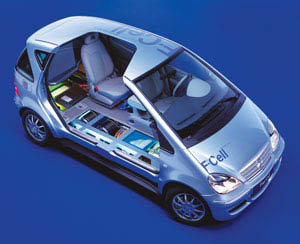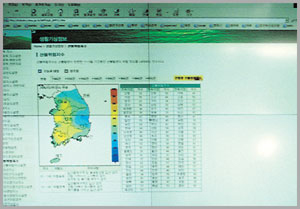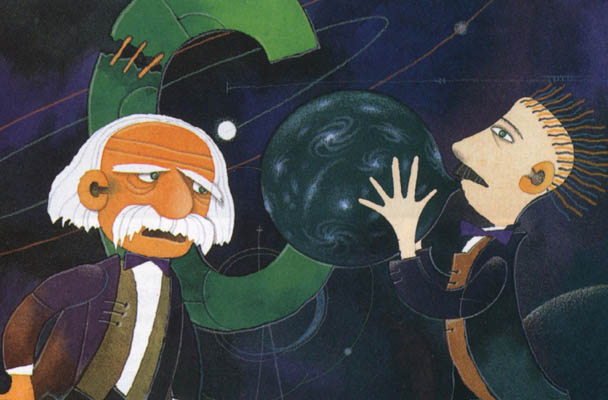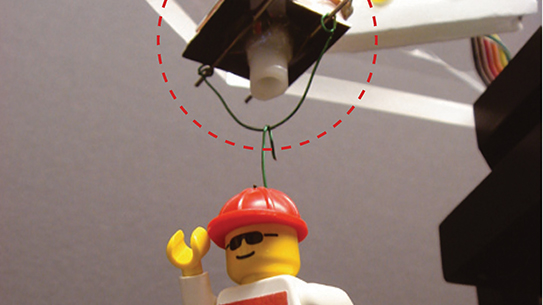Much has changed since Dr. David Ho help ed the world control HIV with powerful new drugs. But the fundamental problem of developing an effective AIDS vaccine remains.
On the positive side, in 2009, scientists announced that they had developed the first vaccine to show any effect against HIV infection. But that effect is very modest. The vaccine’s ability to reduce the risk of new HIV infection 31% is nowhere near the 70% to 90% that public health experts normally view as a minimum threshold for an infectious-disease vaccine. Even further behind in development, but still promising, are two new antibodies identified by a group of researchers working at a number of labs that, at least in a dish, seem to neutralize the virus and thwart attempts to infect healthy cells.
The excitement over those advances however, has been tempered by the still raw memories of a humbling retreat in 2007, after a highly anticipated shot against the virus was deemed a failure. While nobody expected spectacular results, neither did anyone expect such a stunning defeat, and the scientific community is still struggling to recover from it. “We are still a long ways away from having an effective HIV vaccine that physicians can reach into the cabinet and pull out in a vial and inject into a person.” says Dr. Bruce Walker, an HIV expert at Harvard Medical School.
That may be true. But Dr. David Ho, who has been working to develop an HIV vaccine of his own, now believes that a traditional shot, one that relies on snippets of a virus to both awaken and prod the immune system to churn out antibodies, may not be the best way to fight HIV. Rather than expecting the body to do all the work of first recognizing then mounting an attack against the AIDS virus, we may just present the body with a ready-made antibodies that can home in on HIV!
It’s a bold strategy and one that has ne ver been tried before in the AIDS field. Dr. David Ho is willing to stake his repu tation and that of his nearly 20-year-old facility, the Aaron Diamond AIDS Research Center(ADARC) in New York City, on his hunch. So is the Bill & Melinda Gates Foundation, which has steered 7 million dollars his way to pursue the theory. Dr. David Ho has redirected more than half of his lab to the project, and the results so far have reignited his passion for scientific discovery. He’s now back at the lab bench overseeing experiments.
<;해석>; 에이즈 치료를 향한 진일보
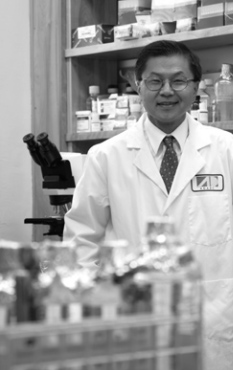 세계가 HIV(Human Immunodeficiency Virus, 후천성 면역결핍 증후군(AIDS)을 일으키는 원인 바이러스)를 제어하는 데 강력한 신약을 발명해 도움을 줬던 데이비드 호 박사 이후 많은 것이 바뀌었다. 그러나 효과 있는 AIDS 백신을 개발해야 하는 기초적인 과제가 아직 남아있다.
세계가 HIV(Human Immunodeficiency Virus, 후천성 면역결핍 증후군(AIDS)을 일으키는 원인 바이러스)를 제어하는 데 강력한 신약을 발명해 도움을 줬던 데이비드 호 박사 이후 많은 것이 바뀌었다. 그러나 효과 있는 AIDS 백신을 개발해야 하는 기초적인 과제가 아직 남아있다.
긍정적으로 보면, 2009년에 과학자들은 HIV 감염을 예방하는 첫 백신을 만들었다고 발표했다. 그러나 효과는 매우 낮았다. 백신이 HIV 감염을 예방할 확률은 31%에 불과했는데, 이는 전문가들이 잡는 실제 백신의 유효값인 70~90%에 턱없이 모자라는 수치다. 이보다 개발이 늦었으나 아직 가망 있는 시도로는 여러 곳의 실험실에서 연구자들이 작업 중인 새로운 항체를 활용하는 것이다. 적어도 실험실 배양접시 위에서 이 항체는 바이러스를 중화시키고 건강한 세포의 감염을 막는 듯하다.
이러한 발전에 대한 흥분에도 불구하고 과학자들에게는 2007년의 기억이 여전히 생생하다. 당시 매우 큰 기대를 모았던 AIDS 백신이 완전히 실패했다. 누구도 대성공을 기대하지 않았지만 마찬가지로 그런 대실패를 예상치 못했고, 과학자 사회에서는 아직도 그때의 기억을 잊지 못한다. 하버드 의대의 브루스 워커 박사는 “의사들이 선반에서 약을 꺼내 사람들에게 주사할 수 있을 정도로 유효한 HIV 백신을 만들기에는 아직 한참 멀었다”라고 말한다.그것은 사실일지 모른다.
그러나 독자적으로 HIV 백신 개발을 시도 중인 데이비드 호 박사는 바이러스의 조각을 사용해 인체의 면역체계를 깨우고 활성화시켜 항체를 생성하도록 만드는 기존의 방식이 HIV에 대항하는 최선의 방식이 아닐 것으로 믿는다. 인체가 우선 AIDS 바이러스를 인식하고 나서 그것을 공격하도록 만드는 대신에 이미 만들어져있는 항체를 인체에 투여해 HIV를 찾아 공격하게 만드는 방식도 있기 때문이다!
이것은 대담한 전략이고, AIDS 영역에서는 시도된 적이 없었던 방식이다. 데이비드 호 박사는 자신의 명성과 20년 역사에 기반한 기관인 뉴욕의 ADARC를 그의 육감에 맡기고자 한다. 빌 & 멜린다 게이츠 재단 역시 그러한데, 이 재단에서는 데이비드 호 박사의 이론을 실험해보도록 700만 달러(약 84억 원)를 지원했다. 데이비드 호 박사는 그의 연구소 인력의 반 이상을 이 프로젝트에 투입했으며, 현재까지의 결과는 과학적 발견에 대한 그의 열정을 다시금 불러일으켰다. 그는 이제 실험실로 돌아와 실험을 감독하고 있다.
On the positive side, in 2009, scientists announced that they had developed the first vaccine to show any effect against HIV infection. But that effect is very modest. The vaccine’s ability to reduce the risk of new HIV infection 31% is nowhere near the 70% to 90% that public health experts normally view as a minimum threshold for an infectious-disease vaccine. Even further behind in development, but still promising, are two new antibodies identified by a group of researchers working at a number of labs that, at least in a dish, seem to neutralize the virus and thwart attempts to infect healthy cells.
The excitement over those advances however, has been tempered by the still raw memories of a humbling retreat in 2007, after a highly anticipated shot against the virus was deemed a failure. While nobody expected spectacular results, neither did anyone expect such a stunning defeat, and the scientific community is still struggling to recover from it. “We are still a long ways away from having an effective HIV vaccine that physicians can reach into the cabinet and pull out in a vial and inject into a person.” says Dr. Bruce Walker, an HIV expert at Harvard Medical School.
That may be true. But Dr. David Ho, who has been working to develop an HIV vaccine of his own, now believes that a traditional shot, one that relies on snippets of a virus to both awaken and prod the immune system to churn out antibodies, may not be the best way to fight HIV. Rather than expecting the body to do all the work of first recognizing then mounting an attack against the AIDS virus, we may just present the body with a ready-made antibodies that can home in on HIV!
It’s a bold strategy and one that has ne ver been tried before in the AIDS field. Dr. David Ho is willing to stake his repu tation and that of his nearly 20-year-old facility, the Aaron Diamond AIDS Research Center(ADARC) in New York City, on his hunch. So is the Bill & Melinda Gates Foundation, which has steered 7 million dollars his way to pursue the theory. Dr. David Ho has redirected more than half of his lab to the project, and the results so far have reignited his passion for scientific discovery. He’s now back at the lab bench overseeing experiments.
<;해석>; 에이즈 치료를 향한 진일보
 세계가 HIV(Human Immunodeficiency Virus, 후천성 면역결핍 증후군(AIDS)을 일으키는 원인 바이러스)를 제어하는 데 강력한 신약을 발명해 도움을 줬던 데이비드 호 박사 이후 많은 것이 바뀌었다. 그러나 효과 있는 AIDS 백신을 개발해야 하는 기초적인 과제가 아직 남아있다.
세계가 HIV(Human Immunodeficiency Virus, 후천성 면역결핍 증후군(AIDS)을 일으키는 원인 바이러스)를 제어하는 데 강력한 신약을 발명해 도움을 줬던 데이비드 호 박사 이후 많은 것이 바뀌었다. 그러나 효과 있는 AIDS 백신을 개발해야 하는 기초적인 과제가 아직 남아있다.긍정적으로 보면, 2009년에 과학자들은 HIV 감염을 예방하는 첫 백신을 만들었다고 발표했다. 그러나 효과는 매우 낮았다. 백신이 HIV 감염을 예방할 확률은 31%에 불과했는데, 이는 전문가들이 잡는 실제 백신의 유효값인 70~90%에 턱없이 모자라는 수치다. 이보다 개발이 늦었으나 아직 가망 있는 시도로는 여러 곳의 실험실에서 연구자들이 작업 중인 새로운 항체를 활용하는 것이다. 적어도 실험실 배양접시 위에서 이 항체는 바이러스를 중화시키고 건강한 세포의 감염을 막는 듯하다.
이러한 발전에 대한 흥분에도 불구하고 과학자들에게는 2007년의 기억이 여전히 생생하다. 당시 매우 큰 기대를 모았던 AIDS 백신이 완전히 실패했다. 누구도 대성공을 기대하지 않았지만 마찬가지로 그런 대실패를 예상치 못했고, 과학자 사회에서는 아직도 그때의 기억을 잊지 못한다. 하버드 의대의 브루스 워커 박사는 “의사들이 선반에서 약을 꺼내 사람들에게 주사할 수 있을 정도로 유효한 HIV 백신을 만들기에는 아직 한참 멀었다”라고 말한다.그것은 사실일지 모른다.
그러나 독자적으로 HIV 백신 개발을 시도 중인 데이비드 호 박사는 바이러스의 조각을 사용해 인체의 면역체계를 깨우고 활성화시켜 항체를 생성하도록 만드는 기존의 방식이 HIV에 대항하는 최선의 방식이 아닐 것으로 믿는다. 인체가 우선 AIDS 바이러스를 인식하고 나서 그것을 공격하도록 만드는 대신에 이미 만들어져있는 항체를 인체에 투여해 HIV를 찾아 공격하게 만드는 방식도 있기 때문이다!
이것은 대담한 전략이고, AIDS 영역에서는 시도된 적이 없었던 방식이다. 데이비드 호 박사는 자신의 명성과 20년 역사에 기반한 기관인 뉴욕의 ADARC를 그의 육감에 맡기고자 한다. 빌 & 멜린다 게이츠 재단 역시 그러한데, 이 재단에서는 데이비드 호 박사의 이론을 실험해보도록 700만 달러(약 84억 원)를 지원했다. 데이비드 호 박사는 그의 연구소 인력의 반 이상을 이 프로젝트에 투입했으며, 현재까지의 결과는 과학적 발견에 대한 그의 열정을 다시금 불러일으켰다. 그는 이제 실험실로 돌아와 실험을 감독하고 있다.








